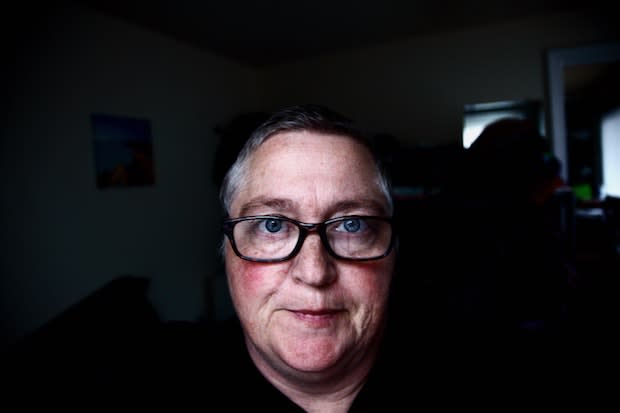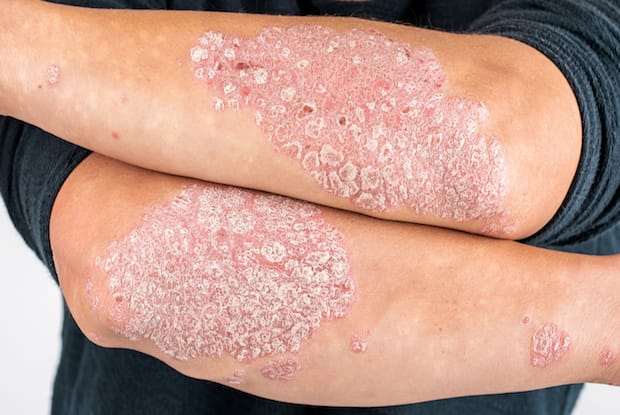Table of Contents
V. Medications for Skin Disorders
The Function of the Skin
The skin is the largest organ in the body and serves many vital functions. The skin keeps everything within the body contained, ensuring that the proper nutrients circulate within. It also acts as a natural barrier for invaders and viruses, protecting our insides from harmful pathogens and ultraviolet radiation from the sun.
The skin is made up of three layers: the epidermis, dermis, and the fat layer. Each one of these layers has its important tasks. The epidermis layer is relatively waterproof and prevents bacteria and foreign substances from entering the body. The epidermis is thicker on the palms of the hand and soles of the feet because these areas require greater protection.
The dermis is the next layer and is made of fibrous and elastic tissue. It gives the skin flexibility and strength. This layer is also important because it contains nerve endings, sweat glands, oil glands, hair follicles, and blood vessels. The number of these structures vary depending on their location on the body. The fat layer below the dermis insulates the body from the heat and cold while providing padding and an energy storage area. [1]
As you can see, the skin is a complicated organ with many structures. Because of this, several conditions may arise and cause unsightly blemishes and redness on the skin. Three common skin disorders include rosacea, psoriasis, and acne. Learn more about the symptoms of these conditions and medications like Retin-A Cream (tretinoin) (also available in gel or micro gel pump), Oracea (doxycycline), Tazorac cream (tazarotene), and Aczone gel (dapsone).
Acne is the most common skin condition. It is likely you had acne as a teenager or at least had friends or family who suffered from pimples and redness. For most, acne tends to dissipate as we age, but symptoms may come and go throughout your life. This skin condition occurs when your hair follicles become clogged with oil and dead skin cells. These clogs can cause whiteheads, blackheads, and pimples. Acne severity varies from person to person. Acne most often appears on the face, forehead, chest, upper back, and shoulders because these areas have the most oil glands. Acne is most often associated with teenagers and puberty because hormonal changes are a common trigger for acne. Hormones can cause oil glands to enlarge and make more sebum (pimple pus). Middle-aged women going through menopause or midlife hormone fluctuations may also have acne breakouts. Stress, certain medications, and your diet can also affect your development of acne. Contrary to popular belief, hygiene, cosmetics, and greasy foods are not solely responsible for acne breakouts. [2] As mentioned, redness and pimples are the main symptoms of acne. You may notice the following skin irregularities if you suffer from acne. These symptoms can occur anywhere on the body where oil glands are present. Rosacea is another skin disorder that may have symptoms similar to acne. Although rosacea may look like acne, it is caused by different risk factors and presents additional symptoms. On the face, rosacea typically causes red, pus-filled bumps. Underneath, redness and blood vessels may become visible. The face is typically the only area of the body affected. Rosacea is usually caused by certain flare-ups and is most common in middle-aged women with light skin. No one knows the exact cause for rosacea, but it is thought to be a combination of hereditary and environmental factors. Spicy foods, extreme temperatures, emotions, exercise, and hot drinks may trigger redness and other rosacea symptoms. If you live with rosacea for a long time, you may develop rhinophyma. This occurs when the oil glands in the nose, sometimes cheeks, become enlarged. This leads to a buildup of tissue on and around the nose. Rhinophyma occurs slowly over several years and is more common in men. [3] Facial redness: The central part of the face is most often affected by facial redness. This occurs when small blood vessels on the nose and cheeks become visible. Red bumps: Small pimples on the face may resemble acne. Sometimes they contain pus and may feel hot and tender. Many undiagnosed rosacea patients think they are experiencing acne. Eye problems: Red and swollen eyelids may occur with rosacea. Ocular rosacea may occur before skin symptoms. Your eyes may also feel irritated and dry. [3] Psoriasis differs from acne and rosacea because it is thought to be an autoimmune disorder. This means that there is a malfunction with the immune system, and the skin regenerates faster than normal. No one knows why the immune system reacts this way, but genetics and environmental factors likely play a role. Psoriasis involves red, itchy, scaly patches on the knees, elbows, trunk, and scalp. This chronic disease tends to flare up in cycles, and symptoms may be present for a few weeks or months. There are several different types of psoriasis, including: Common symptoms of psoriasis include: There are countless forms of medications available for the treatment of common skin disorders. You must consult a dermatologist if you are suffering from rosacea, psoriasis, or acne. In terms of acne, you may be prescribed Retin-A medications like Retin-A Cream (tretinoin) that contain a form of vitamin A. Vitamin A helps the skin renew itself and can help reduce the appearance of fine wrinkles and mottled skin discoloration. [5] Tazorac cream (tazarotene) is another vitamin A medication that can be used for acne or psoriasis. Medications for rosacea differ slightly and contain different ingredients to combat redness. Oracea (doxycycline) contains doxycycline, a type of antibiotic that may reduce pimples and bumps on the face. Aczone gel (dapsone) is another acne-fighting medication that can reduce the bacteria that cause acne vulgaris. This medication is also an antibiotic, and it reduces inflammation, so it can help reduce redness and pimples. {{6}} Talk to your doctor to determine a treatment plan for your skin disorder. The content in this article is intended for informational purposes only. This website does not provide medical advice. In all circumstances, you should always seek the advice of your physician and/or other qualified health professionals(s) for drug, medical condition, or treatment advice. The content provided on this website is not a substitute for professional medical advice, diagnosis, or treatment.
All About Acne
a. Symptoms of Acne
Understanding Rosacea

a. Rosacea Symptoms
Psoriasis Overview
a. Psoriasis Symptoms

Medications for Skin Disorders
